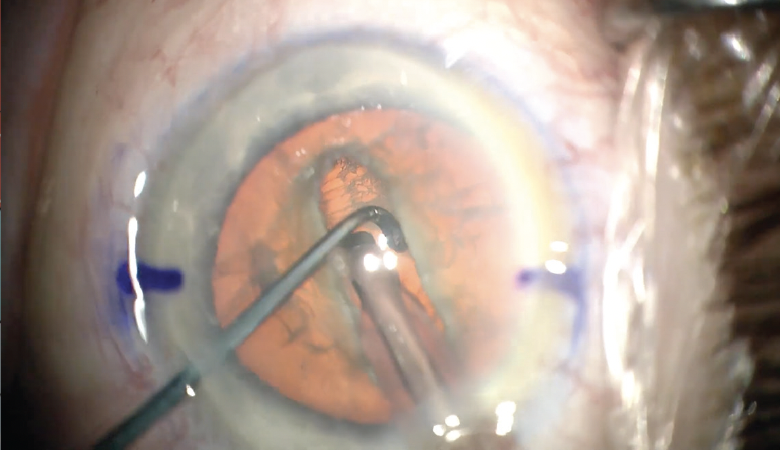
Groove groove, groove groove, groove groove, rotate.
Groove groove, groove groove, groove groove, crack, rotate.
Groove, groove, groove, crack.
Quadrant removal.
That is the rhythm of my technique.
Part divide and conquer and part stop and chop, my technique begins with creating a groove down the middle of the cataract that is the width of one to two phaco tips. The nucleus is rotated 180º, the groove is extended, and the nucleus is cracked. The larger hemisphere is rotated into position in front of the phaco tip, a groove is created down the middle of the segment, and it is cracked in half again.
Cracking is performed from the bottom of the groove (Figure 1). The Seibel chopper and the phaco tip come together to separate and lift the nuclear pieces. The creation of a wide groove reduces the size of the fragments to be lifted out of the bag, which are then manipulated and aspirated. The second hemisphere is lifted out of the bag and chopped. The last small fragments of nucleus are aspirated and phacoemulsified without the use of a second instrument to prevent leakage from the paracentesis, maintain a stable anterior chamber, and create one point of aspiration. The pieces will stop spinning around and come right to the phaco tip.

Figure 1. The nucleus is cracked near the bottom of the groove.
If the cataract is soft or the lens is clear, the nucleus is prolapsed out of the bag during hydrodissection (Figure 2). It is then aspirated.

Figure 2. The nucleus is aspirated with no ultrasound energy.
For dense cataracts, the miLoop (Carl Zeiss Meditec) is used to crack the nucleus, reducing phaco time and energy, minimizing endothelial damage, and hastening visual recovery.




